

cover: Verónica Gaona, Trans---fer, 2023, detail
SAJJAD ABBAS BAGHDAD, IRAQ
TERESA BAKER LOS ANGELES, CA
LYDIA NAKASHIMA DEGARROD OAKLAND, CA
VERÓNICA GAONA HOUSTON, TX
PAULA HIGA WILLISTON, VT
MATTHEW SCHRADER NY, NY / MIDDLEBURY, VT
EDRA SOTO CHICAGO, IL
inside front cover: Edra Soto, Graft I and V (GRAFT series), 2023, detail
When my co-curator, Sarah Rogers, and I began organizing Here Now: Art and Migration more than a year ago, we sought to bring together a group of talented artists who creatively interrogated themes of migration and borders in their practice. The movement across borders elicits contentious discussions along economic, sociopolitical, and ethical lines, and is often relentlessly debated and demonized by the media. Yet, migration profoundly shapes our culture—as both a global and local phenomenon— and is a subject we believe is immensely timely and relevant to our communities.

One of our goals in curating Here Now was to convey the nuanced complexity and meaning of migration. We began defining supporting themes within the exhibition—materiality, transformation, and duality—within the context of borders and place. The exemplary works featured in Here Now convey a strong visceral presence; several are site-specific installations while others explore architectural or physical landscapes through immersive imagery. Rather than focus solely on identity, the exhibition emphasizes how artists conceptually explore ideas of borders through their choice of diverse and expressive media. Deconstructed truck panels, interdisciplinary performances, architectural interventions, phototransfers, and hand-stitched paper are creatively
reimagined by artists as new aesthetic languages. The artists featured in Here Now: Art and Migration—Sajjad Abbas, Teresa Baker, Lydia Nakashima Degarrod, Verónica Gaona, Paula Higa, Matthew Schrader, and Edra Soto—declare their presence in the here-and-now through a visual dialogue that invites the viewer to critically reflect on borders as complex, human inventions that define one’s movement and sense of place.
Artists and community are at the center of Burlington City Arts’ mission. For more than 40 years, BCA has cultivated a dynamic environment through the arts, making quality experiences and opportunities accessible to a broad audience. As Vermont’s leading contemporary art venue,
Here Now: Art and Migration, opening reception, BCA Center
BCA Center is dedicated to supporting artists by organizing original exhibitions and commissioning new work as a vital part of the local creative economy.
Thought-provoking exhibitions such as Here Now: Art and Migration would not be possible without the support of our artists and community. On behalf of BCA, I want to especially thank our Here Now: Art and Migration artists as well as their galleries and lenders including Antonio Murzi; de boer, Los Angeles; ENGAGE Projects, Chicago; Halsey McKay Gallery, New York; and Morgan Lehman Gallery, New York.
For her vision, expertise, and contributions to Here Now, I am grateful to my co-curator Dr. Sarah Rogers, who facilitated a collaboration with Middlebury College to engage students in exhibition-centered programming.
Additionally, I want to thank BCA’s dedicated trustees, leadership, and staff who made this exhibition possible, with special appreciation to Jacquie O’Brien, Curatorial Assistant and Gallery Coordinator, who worked tirelessly with curators and artists to realize the installation of each work in the gallery; Isabella Poutiatine, Gallery Staff, who supported BCA’s curatorial team with vital exhibition research; Kristin Dykstra, Gallery
Here Now: Art and Migration, opening reception, BCA Center
Learning and Programs Coordinator and Sarah Jayne Kennelly, Public Programs Assistant, for leading lively programs, tours, and exhibitionbased activities; and Ted Olson, Design Director, for the design of the exhibition catalogue.
Financial support for exhibitions such as Here Now: Art and Migration would not be possible without our community members, including BCA’s 2024 exhibition year sponsor Mascoma Bank; as well as the Maslow Family Foundation, Vermont Arts Council, and National Endowment for the Arts.
It is a privilege to present Here and Now: Art and Migration at the BCA Center, as it inspires us to reflect more deeply, expand our perspective, and place creative dialogue at the center of Burlington’s community.
—Heather Ferrell Curator and Director of Exhibitions, BCA Verónica Gaona, Migrant Metropolis (To know and to dream at the same time series), 2024, detail

INTRODUCTION
Dr. Sarah Rogers and Heather Ferrell
Co-Curators, Here Now: Art and Migration
Here Now: Art and Migration brings together art and artists from across geographies—California, Vermont, New York, Texas, Illinois, and Iraq. Many of the artists themselves traverse cultural, linguistic, and geographical landscapes, however, what unites their participation in this exhibition is a practice that thinks historically, critically, and aesthetically about the concept of migration and mobility. The works presented in Here Now summon us as viewers to imagine borders not as static, fixed, and natural, but rather as sites of historical investigations, political reckoning, and an emerging aesthetic. As suggested by the exhibition title, these artworks define a presence for themselves through a visual language that encompasses dynamic narratives, shifting perspectives, and symbolic materialities.
In many ways, today’s art world offers an insightful perspective on the ways in which borders govern contemporary life. Traveling exhibitions, international biennales and art fairs, and new media such as video are only select examples of the kinds of mobility that characterize the purported globalized nature of the art world. Certainly, the possibility of including Iraqi artist Sajjad Abbas’ work in Here Now relies precisely on the ability to transport a
digital file of the performative installation, I Can See You, across the internet, itself a globalizing network that both transgresses and enforces borders. As an urban intervention in Baghdad, I Can See You depends upon its location for its politics. The strategic placement of the work overlooked the Green Zone, the four-mile area in central Baghdad that served first as a seat of governmental power prior to 2003, then as a walled-off safety zone for American occupation forces, and finally as the headquarters for the Iraqi interim government. Through his use of pronouns, Abbas momentarily inverted the power dynamics to reclaim agency, so that local residents could monitor the politicians and puppeteers inside the protected Green Zone whose decisions segmented the city, generated urban dislocations, and rendered life violently unstable. Moreover, as an intervention, the large-scale white banner of the artist’s eye was quickly removd by authorities of the Iraqi capital. Video cameras captured footage of the work’s ephemeral existence, enabling its transmission to a gallery space in Burlington, Vermont. The mobility of an artwork that supercedes civilians’ ability to move through their own city due to military occupation and violence underscores another border of the artworld; one in which artists are unable to move across national

borders as easily as their own works of art. The paradoxical physicality yet transgressive potential of boundaries is also at the heart of Mandan/Hidatsa artist Teresa Baker’s large-scale abstract landscapes, including Low Pitched. Composed of synthetic and natural materials, Baker’s vast surfaces conjure up the riverways and geometrical irregularity of state boundaries violently carved out through US westward settler colonialism of native land. Stitching beads, yarn, and willow branches throughout the artificial turf, the artist challenges conventional understandings of Euro-American modernist abstraction, interrogating distinctions between the traditional boundaries of art and hand-crafted objects.
Exposing the presence of her own hand within the artistic process, Baker draws our attention to the fabrication of boundary-making.
The actual remains of such movement across borders is the subject of Verónica Gaona’s installation, Trans---fer. Traces of tire marks cut through the pristine white of the gallery wall, below which stands a worn black tire and solitary tire track of shimmering ground glass atop a slightly elevated pedestal. Installed adjacent to Trans---fer is Migrant Metropolis (To Know and To Dream at the Same Time series), which was commissioned, in part, by Burlington City Arts for the Here Now exhibition.
Here Now: Art and Migration, opening reception, BCA CenterIn Migrant Metropolis, Gaona mounted and scattered along the floor Ford F150 truck panels, chrome plates, and photo-transferred portraits of migrant families memorialized in social gatherings. Working across the Texas-Mexico border, Gaona draws on her transnational identity and investigates ideas of home, monuments, death, and the passage of time through a mobilization of the aesthetics of trokiando, a truck subculture found in large cities among Mexican communities throughout the United States. Through the act of memorializing, Migrant Metropolis offers a visible presence of a cultural aesthetic that represents the sense of impermanence that characterizes living between home and homeland.
The multi-layered complexity of migration is explored in Matthew Schrader’s 2021 multimedia installation, M. Obultra 3. A result of the artist’s ongoing historical and visual investigation into the Ailanthus altissima, known more commonly as the tree of heaven, the work is comprised of 31 photographic prints, a vitrine table displaying seed pods, a framed woodcut, and four stacked and painted yellow blocks based on standard English units of measurement.
The archival aesthetic of the installation— suggestive of 18th century Enlightenment organization of knowledge—exhibits a critical interest in pathways of migration, colonization, and industrialization. Originally brought to the Americas in 1784 from China, the tree of heaven represented a popular decorative foliage planted in private gardens. Once claimed as an exotic plant, the tree is now quite prevalent, as its natural resilience led to its popular use in urban design throughout the 19th century. Schrader’s installation draws our attention to complex histories of migration and displacement grounded beneath the physical landscape.
The processes by which recontextualization shifts meaning is similarly examined through the concept of grafting in Chicago-based Puerto Rican artist Edra Soto’s works, Graft I and V from her 2022 series of the same title. Working across different scales—from architectural interventions to smaller mixed media works, Soto’s creations are immediately tactical, immersive, and visceral. In the grouping of four works presented in Here Now, the artist employs the visual language of rejas and guiebrasoles, iron grills and concrete block screens, which are used in vernacular
 Here Now: Art and Migration, opening reception, BCA Center
Here Now: Art and Migration, opening reception, BCA Center

architecture to provide both protection and ventilation. Like Schrader, Soto calls our attention to the ways in which architectural motifs migrate; specifically in Soto’s Graft series tracing their origins in Puerto Rico to Africa during the slave trade under Spanish colonial rule. The viewfinders embedded in the surfaces of each work transport viewers to other histories and locales, mirroring the notion that relationships to place are unfixed. Indeed, the title of the series itself references the medical procedure whereby skin, the boundary between the human body and the exterior world, is transferred to another territory of the body only to be rejected or absorbed through the process of time.
The body as a form that moves through and across geographies, cultures, and time is at work in Paula Higa’s single channel video installation. A collaborative project that includes dance, music, film, and poetry, The Migrant Body crosses disciplinary boundaries just as the dancers move across doors, fields, and quiet interiors. In the

beginning of the video, the narrator recites a poem about a yellow chrysanthemum, a flower that dreams of departure and travel to other places. As each door opens in the film, a new territory emerges, and time begins anew. For Here Now, Higa conceived of The Migrant Body as both video and installation, including a solitary door and two doorframes that viewers can open and step through. As the sounds of creaking doors open and close, visitors step through doorways across piles of sand; the experience of movement—its sounds, textures, and sights— assumes a visceral physicality suggestive of transformation.
Artist and cultural anthropologist Lydia Nakashima Degarrod’s 2021 installation, Scattered

Seeds of the Cotton Bolls, also captures the concept of transitions and new beginnings. As a Japanese-Chilean Sansei, the artist draws on histories of her family and other Japanese citizens who immigrated first to Peru, then later to Chile against the political upheaval of World War II, which brought threats of deportation and internment as well as the loss of family at Hiroshima. In Scattered Seeds of the Cotton Bolls, seventy-four flowers made from handmade paper dangle together, shifting slightly in response to viewers’ own movement around the installation. The paper, made from mulberry bark, a traditional material used in Japanese paper, and
yerba buena, an herb known in Latin America for its healing qualities, reference the histories of Degarrod’s family as well as other Japanese immigrants living in Peru and Chile. Upon close inspection, the vibrant red and blue flowers reveal family portraits interspersed with images of cotton fields and mushroom clouds, signifying the complex and difficult histories embedded within the very materiality of the installation. The delicate cotton bolls dangle from the ceiling from knotted black twine evoking barb wire as they also suggest the constant threat of movement through borders.
Themes of scattering, dispersion, and displacement run throughout this exhibition; and just as BCA’s gallery space gathers these works together, their collective force also claims a more nuanced understanding of movement, mobility, and migration through and across the different forms and materialities that borders can assume. It is our hope that Here Now: Art and Migration showcases the power of contemporary art to share untold histories, imagine new possibilities, and generate solidarities.


 Sajjad Abbas, I Can See You, 2013, video still
Sajjad Abbas, I Can See You, 2013, video still
 Teresa Baker, Low Pitched, 2023, beads, yarn, willow, buckskin, artificial sinew on artificial turf, 78 x 93.5"
Courtesy of Antonio Murzi and Halsey McKay Gallery, New York
Teresa Baker, Low Pitched, 2023, beads, yarn, willow, buckskin, artificial sinew on artificial turf, 78 x 93.5"
Courtesy of Antonio Murzi and Halsey McKay Gallery, New York
 Teresa Baker, Low Pitched, 2023, detail
Teresa Baker, Low Pitched, 2023, detail
 Here Now: Art and Migration, opening reception, BCA Center
Here Now: Art and Migration, opening reception, BCA Center
 (clockwise from top) Teresa Baker, 1998, Yard Work, Sunday, 2023, oil pastel and ledger paper, 11 x 8.5" each Courtesy of Halsey McKay Gallery, New York
(clockwise from top) Teresa Baker, 1998, Yard Work, Sunday, 2023, oil pastel and ledger paper, 11 x 8.5" each Courtesy of Halsey McKay Gallery, New York
 Teresa Baker, Transplanted, 2023, acrylic, buckskin, and yarn on artificial turf, 95 x 31" Courtesy of de boer, Los Angeles
Teresa Baker, Transplanted, 2023, acrylic, buckskin, and yarn on artificial turf, 95 x 31" Courtesy of de boer, Los Angeles
 Teresa Baker, Transplanted, 2023, detail
Teresa Baker, Transplanted, 2023, detail
 Lydia Nakashima Degarrod, Scattered Seeds of the Cotton Bolls, 2021, 74 flowers, mulberry, and yerba buena fibers, embroidered and printed 10 x 4 x 8'
Lydia Nakashima Degarrod, Scattered Seeds of the Cotton Bolls, 2021, 74 flowers, mulberry, and yerba buena fibers, embroidered and printed 10 x 4 x 8'

 Lydia Nakashima Degarrod, Scattered Seeds of the Cotton Bolls, 2021, detail
Lydia Nakashima Degarrod, Scattered Seeds of the Cotton Bolls, 2021, detail

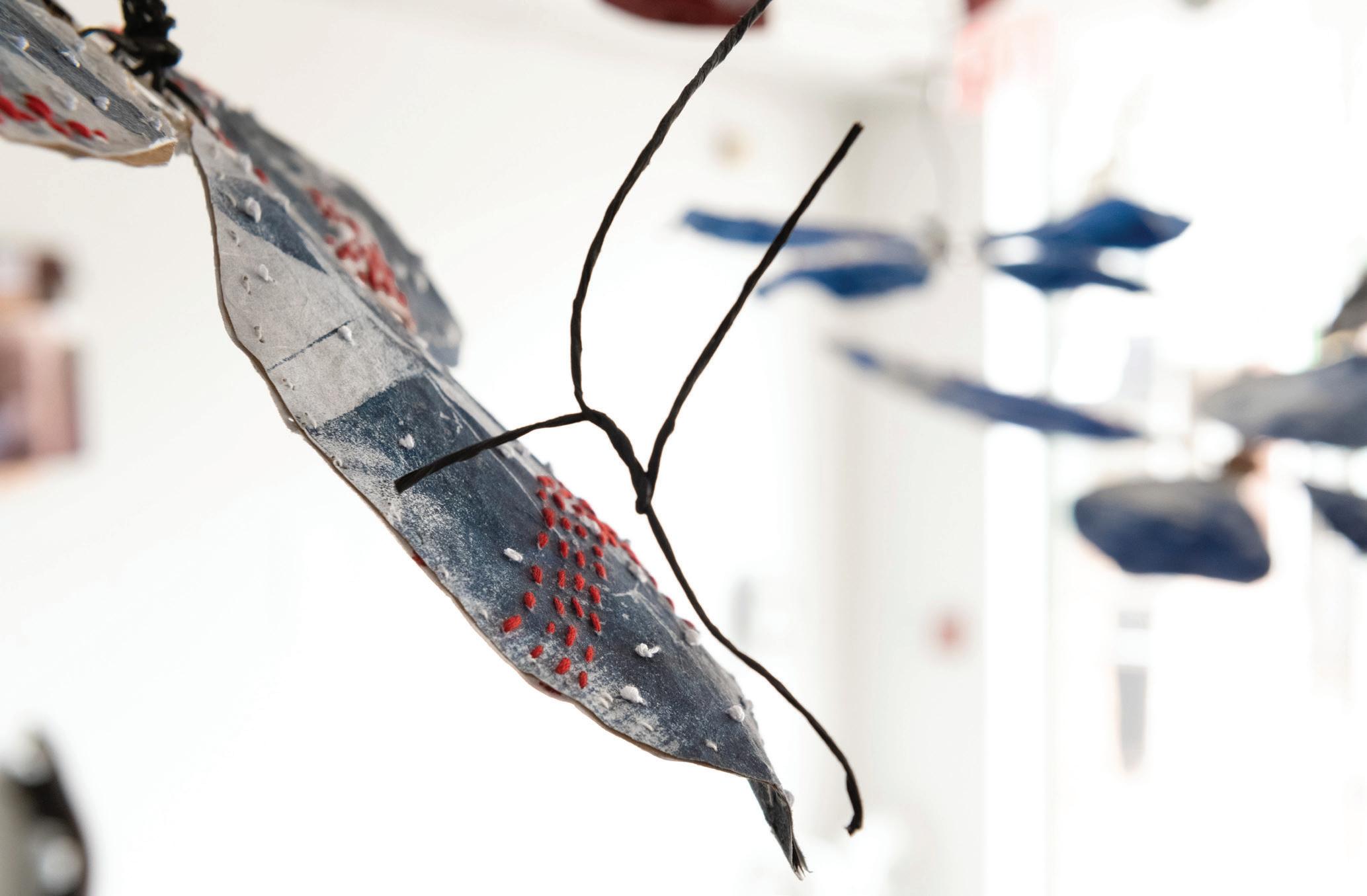 Lydia Nakashima Degarrod, Scattered Seeds of the Cotton Bolls, 2021, detail
Lydia Nakashima Degarrod, Scattered Seeds of the Cotton Bolls, 2021, detail
 Here Now: Art and Migration, opening reception, BCA Center
Here Now: Art and Migration, opening reception, BCA Center
 Verónica Gaona, Trans---fer, 2023, acrylic, rubber dust, Ford F-150 window, glass dust, smooth tire, 88 x 120 x 24"
Verónica Gaona, Trans---fer, 2023, acrylic, rubber dust, Ford F-150 window, glass dust, smooth tire, 88 x 120 x 24"
 Verónica Gaona, Trans---fer, 2023, detail
Verónica Gaona, Trans---fer, 2023, detail
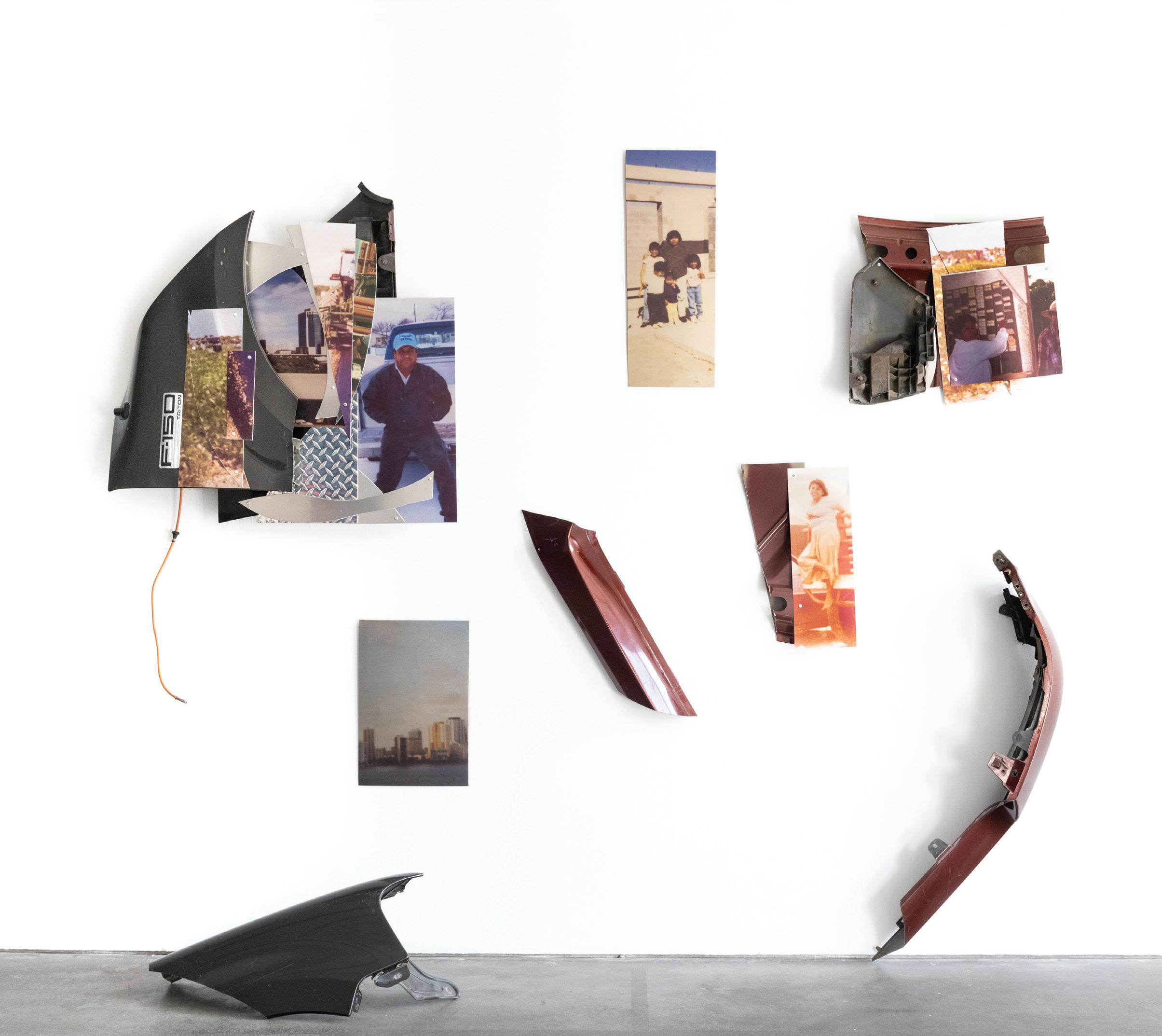 Verónica Gaona, Migrant Metropolis (To Know and to Dream at the Same Time series), 2024 Ford F-150 body parts, aluminum sheets, and archived prints on aluminum sheets, 86 x 98 x 22"
Verónica Gaona, Migrant Metropolis (To Know and to Dream at the Same Time series), 2024 Ford F-150 body parts, aluminum sheets, and archived prints on aluminum sheets, 86 x 98 x 22"
 Verónica Gaona, Migrant Metropolis (To Know and to Dream at the Same Time series), 2024, detail
Verónica Gaona, Migrant Metropolis (To Know and to Dream at the Same Time series), 2024, detail
 Here Now: Art and Migration, installation view, BCA Center
Here Now: Art and Migration, installation view, BCA Center

 Paula Higa, The Migrant Body, 2023, single channel video installation (12 min), doors, sand, and digital prints, dimensions variable
Paula Higa, The Migrant Body, 2023, single channel video installation (12 min), doors, sand, and digital prints, dimensions variable

 Paula Higa, The Migrant Body, 2023, detail
Paula Higa, The Migrant Body, 2023, detail

 Matthew Schrader, M. Obultra 3, 2021, framed woodcut, photographs, painted wooden objects, PVC transparencies, vitrine table (painted MDF tray, glass sheet, metal stand), Ailanthus altissima seed pods, dimensions variable
Matthew Schrader, M. Obultra 3, 2021, framed woodcut, photographs, painted wooden objects, PVC transparencies, vitrine table (painted MDF tray, glass sheet, metal stand), Ailanthus altissima seed pods, dimensions variable
 Matthew Schrader, M. Obultra 3, 2021, detail
Matthew Schrader, M. Obultra 3, 2021, detail
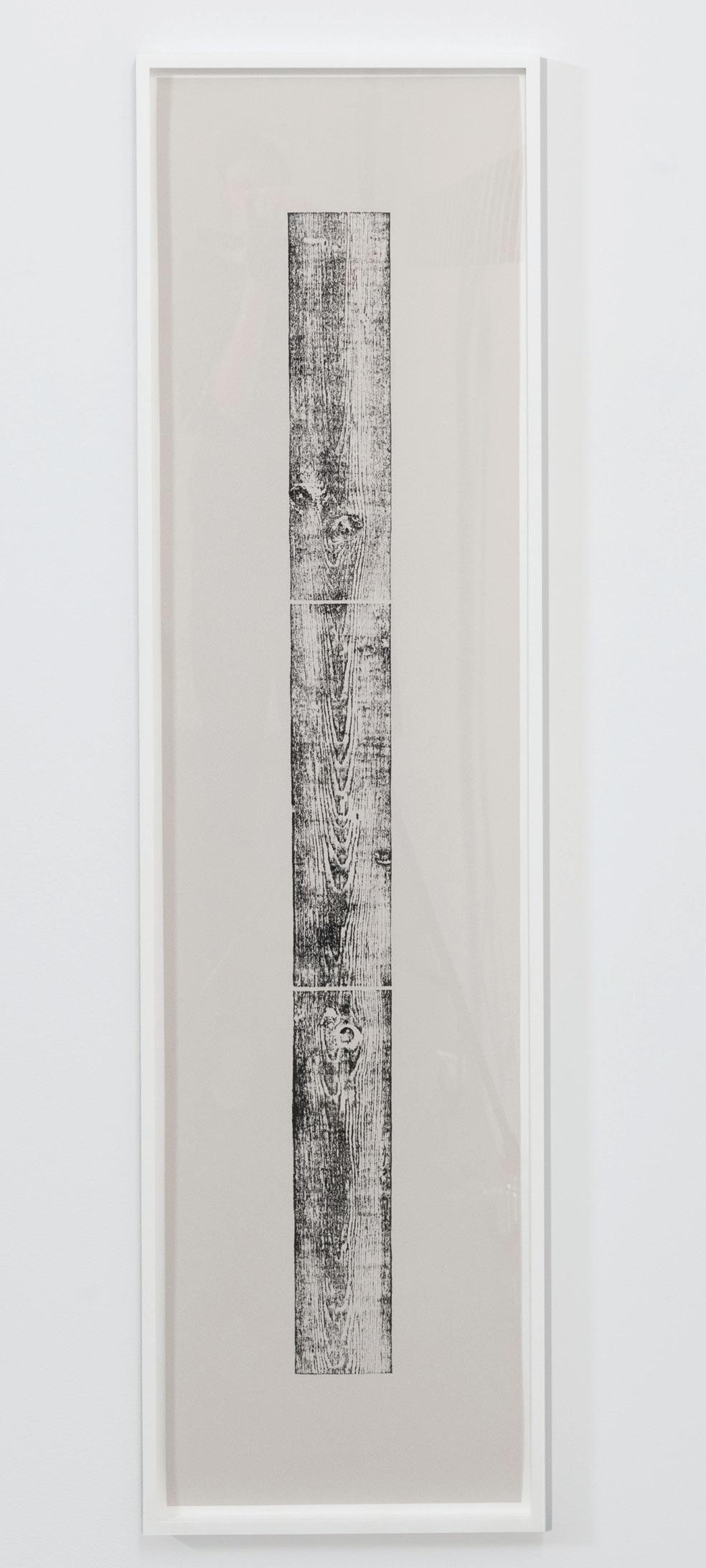 Matthew Schrader, M. Obultra 3, 2021, detail
Matthew Schrader, M. Obultra 3, 2021, detail
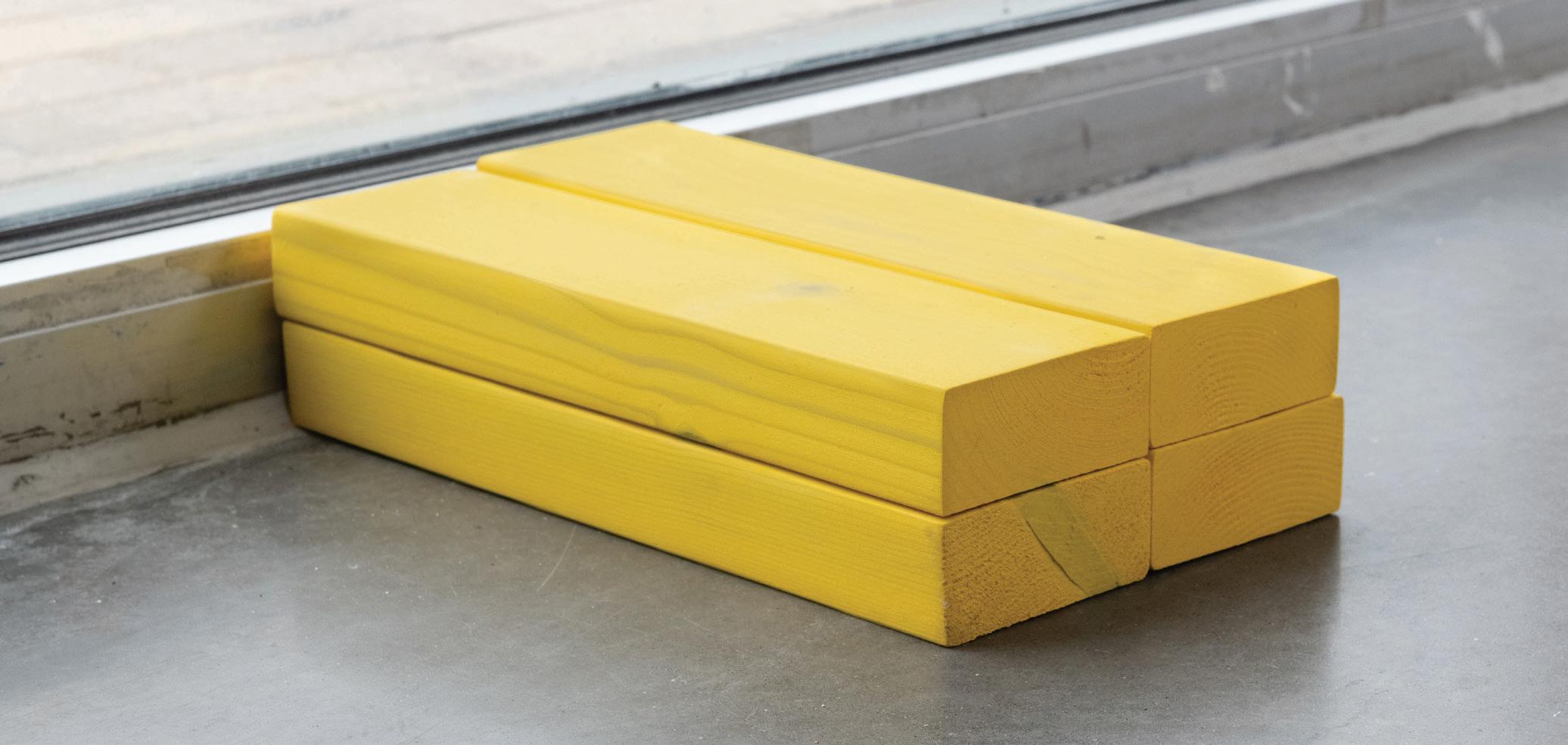

 Matthew Schrader, M. Obultra 3, 2021, detail
Matthew Schrader, M. Obultra 3, 2021, detail
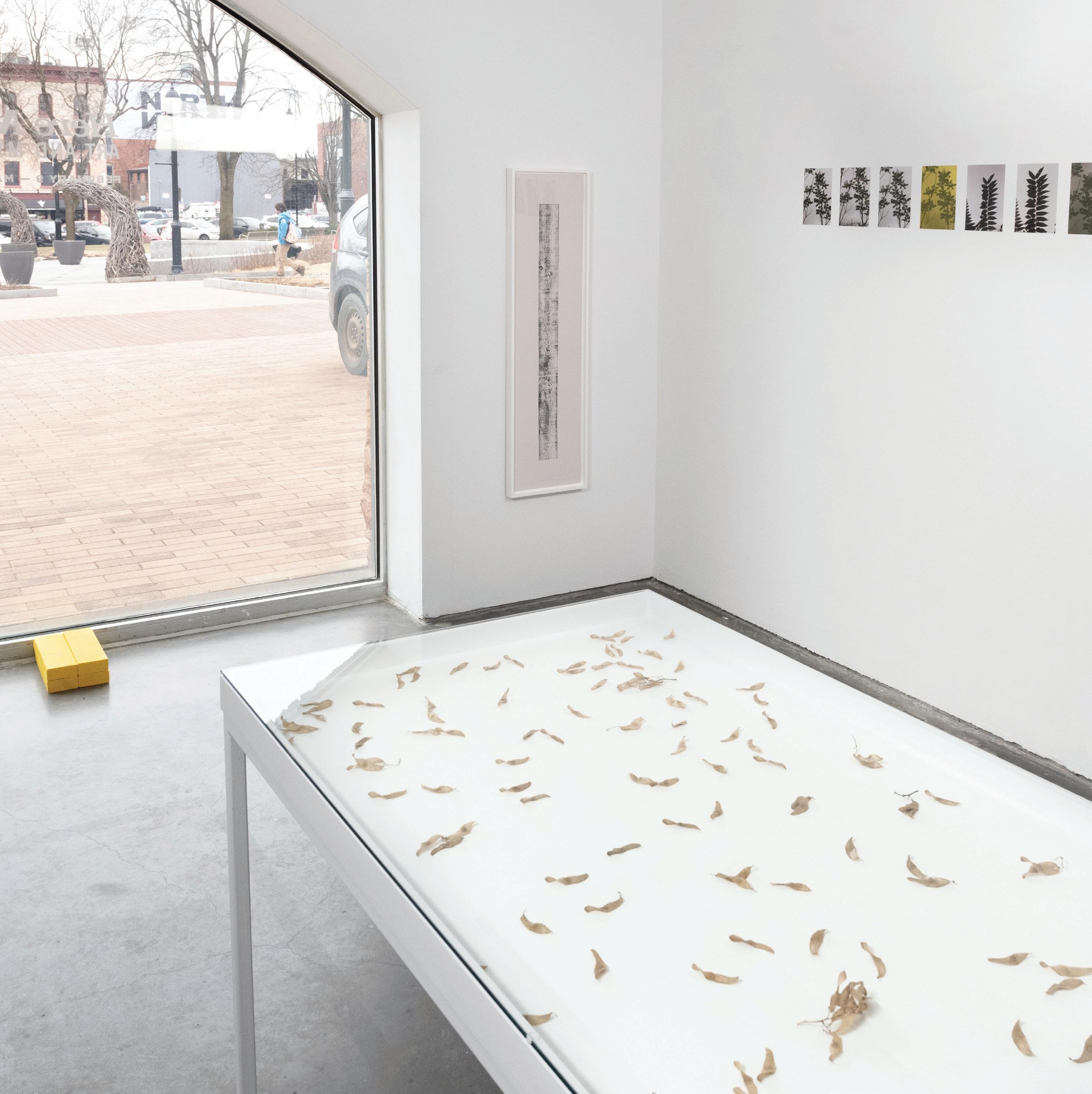
 Edra Soto, Graft I and V (GRAFT series), 2023, mixed media on Sintra, viewfinders, inkjet prints, mirror, 92.5 x 57" each Courtesy of the Artist and Morgan Lehman Gallery, New York
Edra Soto, Graft I and V (GRAFT series), 2023, mixed media on Sintra, viewfinders, inkjet prints, mirror, 92.5 x 57" each Courtesy of the Artist and Morgan Lehman Gallery, New York

 (top) Edra Soto, Graft I and V (GRAFT series), 2023, detail (bottom) Here Now: Art and Migration, installation view, BCA Center
(top) Edra Soto, Graft I and V (GRAFT series), 2023, detail (bottom) Here Now: Art and Migration, installation view, BCA Center
 Edra Soto, Graft, 2022, mixed media. 29 x 24"
Courtesy of the Artist and ENGAGE Projects, Chicago
Edra Soto, Graft, 2022, mixed media. 29 x 24"
Courtesy of the Artist and ENGAGE Projects, Chicago
 Edra Soto, Graft, 2022, mixed media. 24 x 19"
Courtesy of the Artist and ENGAGE Projects, Chicago
Edra Soto, Graft, 2022, mixed media. 24 x 19"
Courtesy of the Artist and ENGAGE Projects, Chicago


